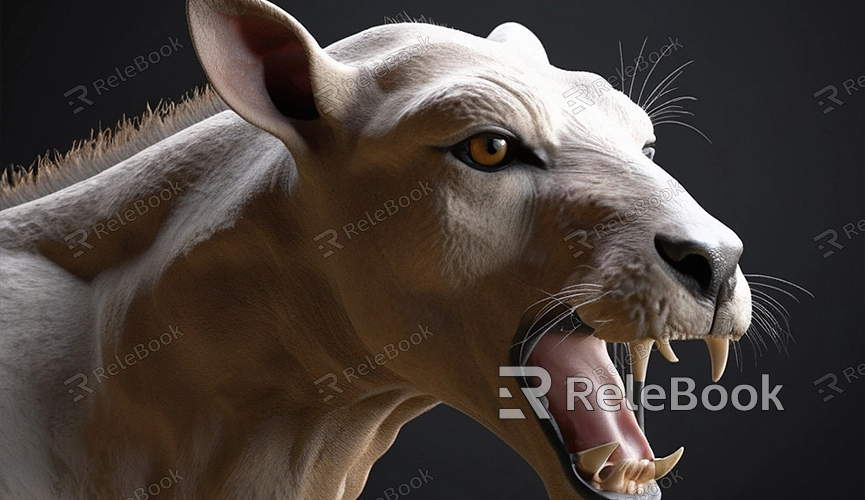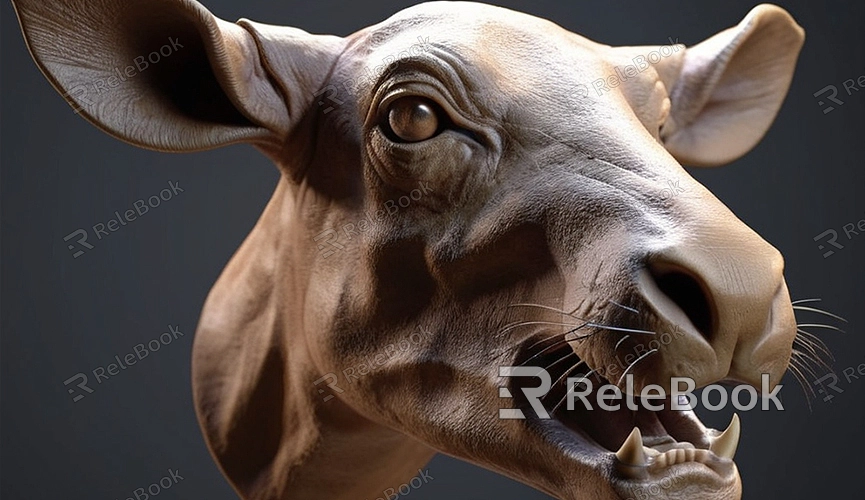Maya how to make a 3d animal model
Creating a lifelike 3D animal model is both a technical challenge and an artistic endeavor in the field of 3D modeling. Autodesk Maya, as a powerful 3D modeling and animation tool, offers a range of features to help you create high-quality animal models. This guide will cover the basic steps for making a 3D animal model in Maya and provide some practical tips to enhance your model's quality and detail.
1. Preparation
The first step in creating a 3D animal model is thorough preparation. Collect reference materials for the animal, including photos, videos, and anatomical diagrams. These references will help you understand the animal's structure, proportions, and detailed features, allowing you to accurately represent its appearance during modeling.

Choosing the Right References
References are crucial for creating realistic animal models. Aim to select high-quality photos and diagrams from multiple angles to maintain accuracy in proportions and details throughout the modeling process. You can find anatomical diagrams online or use actual images of the animal as references.
2. Creating the Base Model
Start by creating a base model in Maya. A base model serves as the foundation for more complex modeling and can be a simple geometric shape, such as a cube or sphere.
Using Sculpting Tools
Maya offers robust sculpting tools to help you add details to the base model. Use these tools to refine and modify the model's features, gradually shaping the animal's form and structure. Sculpting allows you to progressively enhance the realism of the animal.

Utilizing Symmetry
Most animals have symmetrical left and right sides. During modeling, you can use Maya’s symmetry feature to model only one side of the animal, with the other side automatically mirrored. This approach saves time and ensures the model remains symmetrical and consistent.
3. Adding Details
Once you have the base model, the next step is to add details. Details are crucial for determining the realism of the model.
Creating Textures and Materials
To make your animal model look more realistic, add textures and materials. In Maya, use UV mapping tools to flatten the model's surface and create texture maps. Textures might include skin, fur, scales, etc., and applying these textures along with materials will enhance the model's realism.
Adding Fur and Feathers
Many animals' distinctive features come from their fur or feathers. Maya provides fur generation tools to add fur to your model. You can adjust the length, density, and style of the fur to make it look more natural.
4. Rigging and Animation
If you plan to animate your animal model, adding a rig and weight painting is essential. The rigging system provides a skeleton for the model, enabling natural movement.
Creating the Rigging System
In Maya, use the rigging tools to create a skeleton for the animal. The rigging system should match the model’s anatomical structure to ensure smooth and realistic animation.
Weight Painting
After creating the rigging system, perform weight painting to bind each part of the model to the corresponding bones. Weight painting controls how different parts of the model deform with bone movement, enabling natural animation effects.
5. Rendering and Optimization
After completing the modeling and animation, the final step is rendering and optimization. Rendering transforms your 3D model into the final image or animation, while optimization improves performance and rendering efficiency.
Rendering Settings
In Maya, you can use render engines like Arnold to render your model. Set up appropriate lighting and materials and adjust rendering parameters to achieve the best visual effects.
Optimizing the Model
Optimizing the model enhances rendering efficiency and performance. Reduce unnecessary polygons and adjust detail levels to improve rendering speed and quality.
Creating a 3D animal model in Maya involves meticulous work and technical skills. From preparing reference materials and creating the base model to adding details, rigging, and rendering, each step is crucial. With careful modeling and rendering, you can create impressive animal models. If you need high-quality 3D textures, HDRIs, or model downloads for your models and virtual scenes, you can find them on Relebook. Download and directly import these textures and models to enhance your work.

